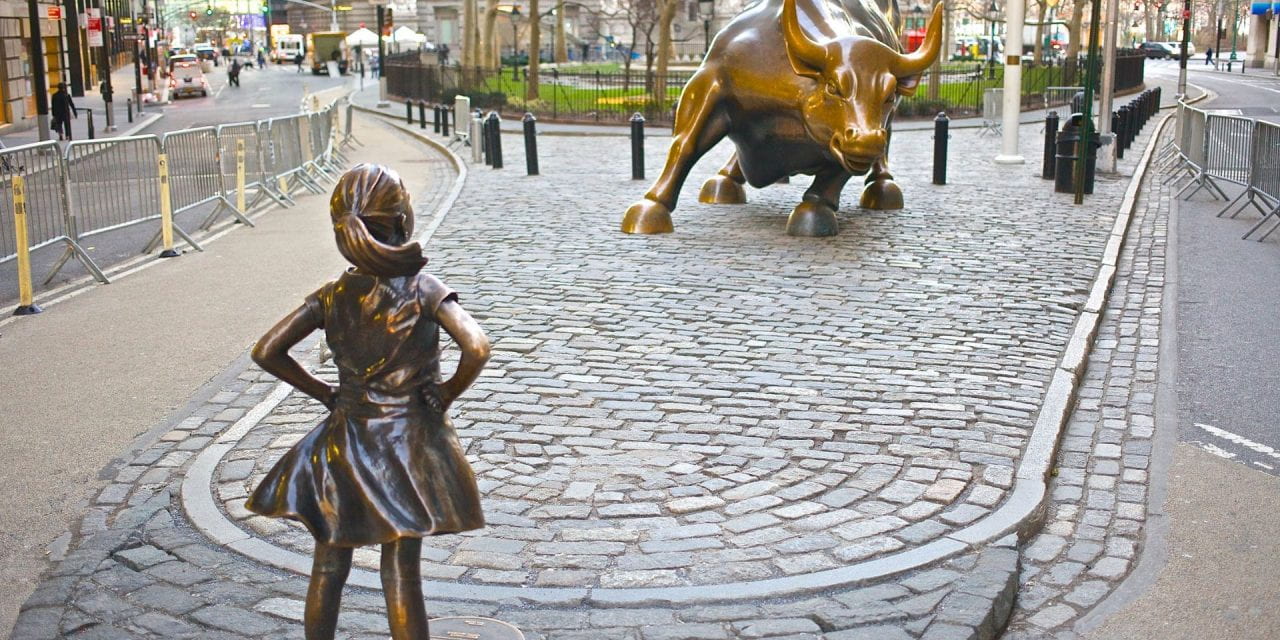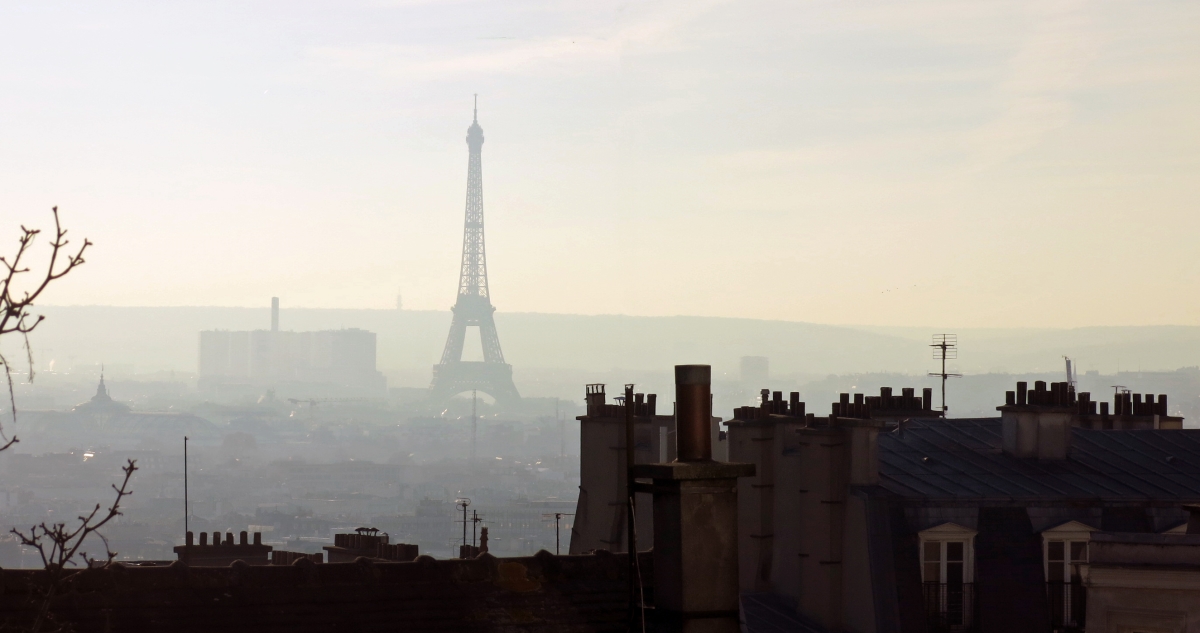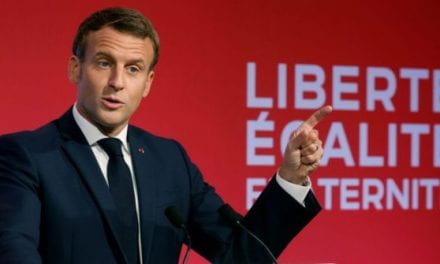The word “Populism” was thrust into the public lexicon in 2015 on a wave of anti-establishment electoral contestations in the West, most notably in the United States and Great Britain. At the time, many interpreted these developments as aberrations— mere grievances at the periphery rather than cases of systemic rot. Hillary Clinton secured the democratic nomination for the 2016 presidential election against her cantankerous populist-Left rival, Bernie Sanders, and mobilized a mountain of political capital against her populist-Right opponent, Donald Trump, later that year. Meanwhile, polls taken prior to the Brexit referendum appeared to indicate a preference for remaining in the European Union, rebuffing the platforms of Leave campaigners like Nigel Farage and Boris Johnson.[1] This populist moment would be a brief detour before returning to politics as usual, so the dominant narrative went.
In 2020, it has become cliché to describe the outcomes of these elections as unexpected. It is now obvious that Brexit and Trump were not flash-in-the-pan political upsets, but rather the presages of a global phenomenon. Indeed, populism seems even more relevant today than it was five years ago. As this piece is being written, Prime Minister Boris Johnson presides over the early stages of trade talks with a now 27-member European Union, while Donald Trump and Bernie Sanders are among the most dominant figures in America’s 2020 presidential election. Yellow Vests and Chilean demonstrators clash with police forces while Obrador and Bolsonaro continue to consolidate power as chief executives of their respective countries. The populist moment has managed to endure with no end in sight, and the political Center across the West continues to cede power to the fringes.
The persistence of populist electoral victories and protest movements in recent years begs the question, “how did we get here?” Or perhaps more aptly, “why are we still here?” Many commentators claim that we have entered a fundamentally new era in political life, completely separate from the more civilized politics of the pre-2015 world.[2] This line of thinking suggests that some sort of radical change occurred five years ago that unleashed a Pandora’s box of xenophobia and anti-elitism into the political sphere. This is a false premise. Instead, contemporary populism should be understood as the logical outcome of structural features inherent to the modern political economy. Populism, in this sense, is not a consequence of radical change but one of decades-long apathy and stagnation. Mitigating the most perverse designs of populism’s usurpers, therefore, can only be achieved by acknowledging these deficiencies and seeking alternatives to them.
Discourses on Populism
Substantive discussions on populism can be notoriously difficult due to the term’s ambiguity. Though it has only achieved ubiquity in recent years, “populism” has been used to describe social movements in the West since at least the early 20th century, often referring to agrarian, grassroots political movements in the United States.[3] In its purest form, populism is a “thin” political ideology grounded in discontent with the status quo, resistance to a corrupt “elite,” and the defense a pure and marginalized “the people.” These vague and moralistic trappings lend themselves more to a rhetorical style than any comprehensive system of beliefs.[4] As a result, populism has been adapted by a variety of social movements across the political spectrum, filling the ideological vessel of any charismatic leader skillful enough to wield it.
In both the mainstream media and academia there is, however, a tendency to focus only on the right-wing iterations of populist movements and to define populism solely on their terms. This perspective suggest that populism is inherently anti-pluralist and ultra-nationalist, reducing the parameters of populism to its “right-wing-ness.”[5] The problem with this is twofold. For one, it concedes legitimate anti-elite rhetoric to the most anti-democratic forces in political life. By invoking populism as an epithet, pundits ignore populism’s historical and theoretical potential for democratic rejuvenation. Second, these analyses favor cultural explanations for populism over socioeconomic ones, often framing populist movements with narratives of demographic change and white, male, Christian resentment. While these forces undoubtedly contribute to populist ideologies on the political right, they are not necessarily constitutive of populism proper. Rather, what unites populist movements across ideologies is the rhetoric of economic and political marginalization.[6] Thus, to understand the effectiveness of populist rhetoric in contemporary politics, one must acknowledge the peculiarities of the modern political economy and explore the macroeconomic forces which produce widespread, class-based grievances.
The Socioeconomics of Resentment
Populism resonates in Western political discourse because of a few immutable truths about the modern economy. Real wages have stagnated, if not declined; the costs of housing, education, and healthcare have gone up; and the proportion of the economy owned by the richest members of society has skyrocketed to levels not seen since the gilded age.[7] It should come as no surprise that these statements read like contemporary populist talking points, especially those offered by the populist-Left. The “bread and butter” issues at play here have come to dominate electoral discourses across much of the developed world in recent years. What is less often discussed, however, is that these trends can be traced to a wide-ranging, yet discrete set of policy choices made since the late 1970’s. In academia and at the peripheries of popular political discourse, these policies are broadly referred to as “Neoliberalism”, and they constituted nothing less than an abrupt reordering in societal power relations[8].
Neoliberalism represented a radical departure from the so-called Keynesian model of political economy that preceded it. For a generation after World War 2, the Keynesian model supported a form of governance in which market capitalism was “embedded in society, devoted to social welfare, and responsive to democratic processes”.[9] The wealth gap that had defined the social order prior to the Great Depression was closed. Higher taxes on the super wealthy reduced the share of wealth owned by the top 0.01 percent of earners from 10% to 2% in the US, France, and UK over this period.[10] Robust union membership kept wages on par with productivity, and state spending supported full employment. Under this system, treating economic challenges as social-collective issues was common practice, and government sought to balance the excesses the of the market by mediating between capital and labor.[11] The Keynesian model of political economy made a populist backlash nearly impossible because the status quo reflected majoritarian politics and because the influence of wealth was constrained by the political system.
But by the 1970’s, cracks had begun to appear in Keynesian economic thought. In America, the “stagflation” crisis undermined faith in government stewardship of the economy, while Cold War sentiments and an ascendant conservative movement promoted anti-statist, anti-welfare, and anti-bureaucracy attitudes in the political sphere.[12] Market-oriented thinkers like Friedrich Hayek and Milton Friedman were thrust into the mainstream, finding common cause with the likes of US president Ronald Reagan and British PM Margaret Thatcher. They and a growing cadre of think tanks and lobbyists would decry social-collectivist responses to economic problems as inimical to freedom. To them, generous social spending and financial regulation were the telltale omens of looming autocracy.[13] Under the pretext of liberation, this new intelligentsia received a mandate to remake the social order.
To this end, the Neoliberal policy program that emerged sought to relieve the market from the state’s oversight while transferring a greater share of economic burdens on to the individual. Financial deregulation and union busting were celebrated, and the boundaries of the state were redrawn in pursuit of libertarian ideals of small government. Less progressive taxation models and cuts to public spending became fiscal orthodoxy, granting massive tax cuts to corporations and the super wealthy.[14] By the end of the 20th century, CEO salaries had increased by nearly 400%.[15] Meanwhile, precarious work with fewer benefits became common in an increasingly service-based gig economy. Ordinary citizens and families found themselves on the hook for the rising costs of healthcare and education as public services were privatized.[16] This emerging economic paradigm operated under the principle that freedom demanded public policy to serve the market rather than the other way around. But as markets were disembedded from greater society and citizens were held responsible for what had previously been the burden of the state, a new social order emerged in which the relative economic power of the majority was subsumed by that of a wealthy elite.
Populism as Correction
In theory, the degradation of living standards in advanced democracies would foment dissent within republican institutions. A responsive political system would, by definition, encourage oppositional groups and provide a platform for public grievances. The most pernicious outcome of the Neoliberal revolution, however, was its uncanny ability to stifle alternative theories of governance. The end of the Cold War and the collapse of the communist system instilled a certain triumphalism around market-based democracies. The so-called “end of history” granted an air of finality in the Neoliberal order and narrowed the parameters of political imagination.[17] In the aftermath of this ideological victory, systemic change was deemed undesirable, if not impossible. At the same time, North Atlantic politics began to converge around a Neoliberal consensus, presenting voters with few alternatives to the dominant system at the ballot box. Although Neoliberal policies were initially pursued and internationalized by the political Right in America and the United Kingdom, the liberal parties in the West would largely find themselves supporting Neoliberal economic policies by the 1990’s following a string of electoral defeats in the decade prior.[18] For both Left- and Right-of-center coalitions, the legitimacy of political institutions and campaign platforms was increasingly tied to market-friendly metrics.[19] With no formidable ideological enemies overseas and surface-level economic stability at home, governance in the West became an exercise of technocratic problem-solving, rather than an arena for genuine political contestation.[20]
The first traces of contemporary populism appeared in the years following the 2008 financial crisis and the subsequent recession. Governments in the West made reforms at the margins to rein in banking speculation and provide moderate relief to citizens, but the fundamentals of the system were kept largely in place. Bailouts for banks and corporations coupled with weak white-collar crime enforcement inoculated financial institutions against the cost of their excesses. CEO’s would resign with exuberant bonuses as millions saw their homes foreclosed and their savings wiped out. The recovery was slow and lopsided, and structural inequities continued to fester to the applause of a rebounding stock market.[21]
As the unfolding crises were met with the same tired, Neoliberal prescriptions, activists and voters began to take aim at a the increasingly cozy relationship between the state and the financial sector. The Occupy Wall Street movement reflected growing disgust with wealth inequality and a lack of corporate accountability, while Eurosceptic movements developed a conspiratorial disdain for international bankers. Bernie Sanders and Donald Trump appeared in America’s 2016 presidential primary, both punching towards the center and curiously aligning on trade, infrastructure, and social security.[22] By the time these forces culminated in the dramatic events of 2016, it was clear that the global populist movement that had emerged was a natural response to the apathetic, non-confrontational nature of Western politics. It endured, against expectations, by promising to restore popular sovereignty, making long overdue economic arguments that defied the Neoliberal consensus. Populism, for all intents and purpose, aimed to make politics political again.
Clinging to the Old Regime
Much like populism, the term “Neoliberalism” has been the target of many attempts to discredit its authentic definition in recent years.[23] As critiques of Neoliberal policy programs have grown louder in certain journalistic circles, so too have the displays of red-baiting punditry and op-ed chauvinism that attempt to admonish its mere mention. At best, takes like these imply that such criticisms are nothing more than cheap shots lobbed at politicians by communist keyboard warriors. At worst, they frame critiques of Neoliberalism as evidence of reductive, illiberal, or even authoritarian attitudes. Problems of definition are common in political theory and even more common in popular media, but ambiguities like these bear an especially pernicious effect on contemporary political discourse. Much like those who perceive populism as a uniquely right-wing phenomenon, those who marginalize critics of the existing political economy tacitly defend the infallibility of Neoliberal governance by denying the possibility of a new political paradigm.
21st century societies shouldn’t be satisfied with such naked state incompetence and corporate supremacy. Regardless of one’s political persuasions, acknowledging the failure of Neoliberal governance is the first and most reasonable step towards anything resembling genuine political reform. In modern political life, there is nothing more out-of-touch than to consign the criticisms of status quo politics to the furthest fringes of the political spectrum, just as there is nothing more damaging to a democratic society than the refusal to acknowledge the possibility of a better future. Populism emerged as a rebuke of a fundamentally flawed economic paradigm— the voice of a body politic desperately trying to reform itself in the face of manifest decay. At a time when many citizens and politicians call for a return to some contrived sense of normality, it is critical that we examine how the consensus-based politics of the past inevitably led us to the instability of the populist moment. To do otherwise would risk the disastrous consequences of collective amnesia. Populism and Neoliberalism are undoubtedly the two most influential forces at play in contemporary Western politics. Acknowledging the close practical and theoretical linkages between the two concepts is essential not just to understand the populist moment we find ourselves in, but to move beyond it as well.
[1]Uptin Saiidi. “Here’s why the majority of Brexit polls were wrong”. CNBC. July 4th, 2016
[2]Kenneth Roth. “The Dangerous Rise of Populism: Global Attacks on Human Rights Values”. Human Rights Watch. 2017; Eugene Robinson. “Trump ushers in a new era of pitchfork populism” Washington Post. December 10, 2015
[3]Jason Frank. “Populism and Praxis,” in The Oxford Handbook of Populism, (Oxford University Press, 2017); Jason Frank. “Populism Isn’t the Problem”. Boston Review. August 15, 2018
[4] Bojan Bugaric. “Could Populism Be Good for Constitutional Democracy?” Annual Review of Law and Science 15:1, 41-58; Kim England & Kevin Ward. “Theorizing Neoliberalization” in The Handbook of Neoliberalism (Routledge, 2016)
[5]Kenneth Roth. “The Dangerous Rise of Populism: Global Attacks on Human Rights Values”. Human Rights Watch. 2017; Wendy Brown. In the Ruins of Neoliberalism: The Rise of Antidemocratic Politics in the West (Columbia University Press, 2019.); Bojan Bugaric. “Could Populism Be Good for Constitutional Democracy?” Annual Review of Law and Science 15:1, 41-58
[6] Bojan Bugaric. “Could Populism Be Good for Constitutional Democracy?” Annual Review of Law and Science 15:1, 41-58
[7] Jason Hickel. “Neoliberalism and the End of Democracy” in The Handbook of Neoliberalism (Routledge, 2016); Drew Desilver. “For most U.S. workers, real wages have barely budged in decades”. Pew Research Center. August 7, 2018.
[8]Ulrich Bran. “Postneoliberalism” in The Handbook of Neoliberalism (Routledge, 2016)
[9]Jason Hickel. “Neoliberalism and the End of Democracy” in The Handbook of Neoliberalism (Routledge, 2016)
[10]Jason Hickel. “Neoliberalism and the End of Democracy” in The Handbook of Neoliberalism (Routledge, 2016)
[11]Jason Hickel. “Neoliberalism and the End of Democracy” in The Handbook of Neoliberalism (Routledge, 2016); Bojan Bugaric. “Could Populism Be Good for Constitutional Democracy?” Annual Review of Law and Science 15:1, 41-58
[12]Jason Hickel. “Neoliberalism and the End of Democracy” in The Handbook of Neoliberalism (Routledge, 2016)
[13]Wendy Brown. In the Ruins of Neoliberalism: The Rise of Antidemocratic Politics in the West (Columbia University Press, 2019); Friedrich A. Hayek. The Road to Serfdom (Chicago University Press, 1944)
[14]Wendy Brown. In the Ruins of Neoliberalism: The Rise of Antidemocratic Politics in the West (Columbia University Press, 2019)
[15]Jason Hickel. “Neoliberalism and the End of Democracy” in The Handbook of Neoliberalism (Routledge, 2016)
[16] Wendy Brown. Undoing the Demos: Neoliberalism’s Stealth Revolution. (MIT Press, 2015); Wendy Brown. In the Ruins of Neoliberalism: The Rise of Antidemocratic Politics in the West (Columbia University Press, 2019.)
[17]Francis Fukuyama. The End of History and the Last Man (Free Press, 1992);
[18]Jason Hickel. “Neoliberalism and the End of Democracy” in The Handbook of Neoliberalism (Routledge, 2016)
[19]Wendy Brown. Undoing the Demos: Neoliberalism’s Stealth Revolution. (MIT Press, 2015)
[20]Jason Frank. “Populism and Praxis,” in The Oxford Handbook of Populism, (Oxford University Press, 2017); Jason Frank. “Populism Isn’t the Problem”. Boston Review. August 15, 2018
[21] “The Financial Crisis of 2007-08: Effects and Aftermath of the Crisis”. Encyclopedia Britannica; “The Impact of the September 2008 Economic Collapse”. Pew Research Center
[22]Jason Hickel. “Neoliberalism and the End of Democracy” in The Handbook of Neoliberalism (Routledge, 2016); Tamara Keith. “5 Ways Bernie Sanders And Donald Trump Are More Alike Than You Think”. NPR Morning Edition. February 8, 2016
[23] Jonathan Chait. “How ‘Neoliberalism’ Became the Left’s Favorite Insult of Liberals”. New York Magazine. July 16, 2017; Nellie Bowles. “The Pied Pipers of the Dirtbag Left Want To Lead Everyone to Bernie Sanders” The New York Times, 2020







